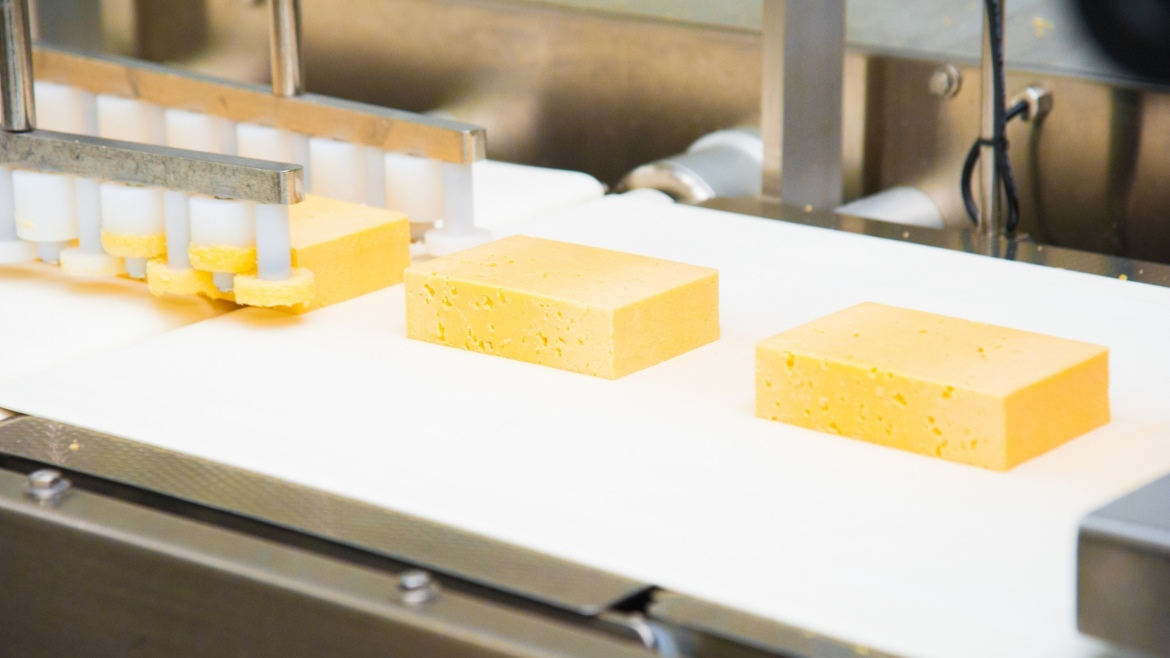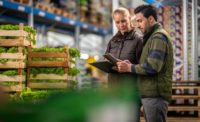Automation/Robotics
A Better Vision for Food Traceability

Using their partnership with Shibaura Machine, TM Robotics’ engineers found the right algorithm in the vision program to ensure the robot could pick the cheese accurately. Image courtesy of TM Robotics
Each year, 48 million Americans get ill from food poisoning, and it can take months to identify the cause. To tackle this, the U.S. Food and Drug Administration (FDA) is introducing a long-awaited Food Traceability Final Rule for manufacturers to allow faster identification of contaminated food.
The FDA’s final rule on Requirements for Additional Traceability Records for Certain Foods—otherwise known as the Food Traceability Final Rule—takes effect in January 2026 and will allow for faster identification and rapid removal of potentially contaminated food from the market, resulting in fewer foodborne illnesses and/or deaths. As well as addressing the widespread issue of food poisoning in America, the new rule will also compel food manufacturers to improve their end-to-end quality management practices.
Food Safety in Manufacturing
Much is at stake for manufacturers that fail to guarantee safety in food production, including loss of customer confidence and reputational damage. However, addressing food safety in food processing facilities is not easy. Investments of time and money, processes and equipment, as well as changes to culture and awareness among workers on the shop floor, are required.
Fortunately, automation offers a solution to these myriad challenges, particularly advanced robotics. The number of new robot installations in U.S. food manufacturing environments reached its second-highest level in history in 2020, reports the economic analyst ING. Robots not only keep human workers out of uncomfortable or unsafe environments, and free from injury, they can also eliminate the potential for cross-contamination. Robots are especially effective in repetitive tasks like casing, packaging and bin picking that involves gripping, moving or placing different food products.
Eyes for Robots
This brings us to a major benefit of robotic systems: sorting and separating quality products from those that may be inferior or even unsafe. Robot-assisted quality-sorting is one of the most effective ways to improve traceability systems in food manufacturing environments. This is supported by the latest Industry 4.0 sensors and advanced vision systems—that’s the eyes of robots that allow them to assess light, temperature and proximity to other objects in the surrounding environment.
Of particular importance are 2D and 3D vision systems. Blind robots—or those that operate without vision systems—are often deployed to complete simple repetitive tasks. Whereas robots with machine vision react intuitively to their surroundings. In other words, these robots are truly autonomous and, when programmed effectively, can identify and remove unsafe foods from production.
A Clear Reading
With a 2D system, the robot is equipped with a single camera. This approach is better-suited for applications where reading colors or textures is important, like barcode detection. 3D systems operate with multiple cameras and can overcome some of the errors 2D-equipped robots encounter when executing physical tasks, which would otherwise leave human workers to diagnose and solve the malfunction.
3D systems can read barcodes, check for defects such as in engine parts or wood quality, inspect packaging and inspect the end product.
The latest vision systems include Shibaura Machine’s TSVision3D system for industrial robots. The system doesn’t require complex CAD data to recognize objects. Instead, it uses two integrated and high-speed stereo cameras capture continuous, real-time 3D images. The software can recognize objects positioned in its field of vision, even for non-uniform products like bananas.
Take the example of Elliptical Design, a design and manufacturing company that turned to TM Robotics to design an ultrasonic cutting system for robot-assisted quality-sorting. Developed for a cheese manufacturer, the challenge was to ensure that the robot was picking up cheese in the right place and able to put it down as accurately as needed. However, a margin of error was created by the cheese’s softness and unusual non-round shape.
Using their partnership with Shibaura Machine, TM Robotics’ engineers found the right algorithm in the vision program to ensure the robot could pick the cheese accurately. The result was automated quality-sorting with improved efficiency and reduced waste.
This example shows how robot assistance can, to paraphrase the FDA’s Food Traceability Final Rule, allow for faster identification and rapid removal of inferior quality foods. What’s more, with industrial robots and advanced vision inspection technologies, like Shibaura Machine’s TSVision3D system, manufacturers quickly eliminate contaminated foods from production lines and, in doing so, help keep Americans safe from the ill, or even fatal, effects of food poisoning.
Looking for a reprint of this article?
From high-res PDFs to custom plaques, order your copy today!





